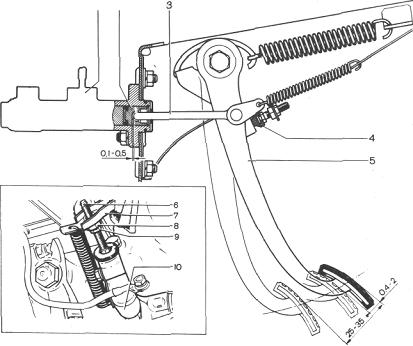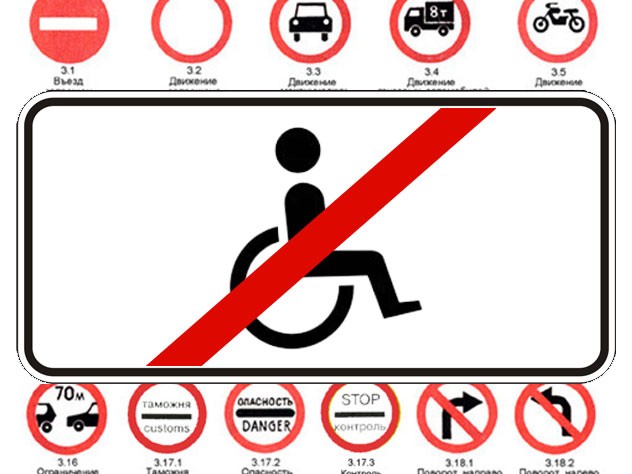
How to adjust the clutch
Content
The clutch is an important component in the operation of manual transmission vehicles. The clutch allows the transmission to disengage from the engine, allowing the operator to change gears. For the clutch to work properly...
The clutch is an important component in the operation of manual transmission vehicles. The clutch allows the transmission to disengage from the engine, allowing the operator to change gears.
For the clutch to work properly, there must be sufficient free play in the connection between the foot pedal and the clutch lever. If the free play or clearance is too small, the clutch will slip. If the free play is too large, the clutch may drag.
Over time, the clutch wears out and needs to be adjusted. Clutch free play should be checked and adjusted every 6,000 miles or in accordance with the manufacturer's maintenance schedule.
Newer vehicles use a hydraulic clutch and slave cylinder that are self-adjusting and do not require adjustment. Older vehicles use a clutch cable and clutch lever that require adjustment at regular service intervals to keep the clutch evenly worn and in good working condition.
- A warning: Incorrect clutch adjustment may cause clutch slip or uneven clutch wear. Make sure you follow the manufacturer's specifications when adjusting your clutch and refer to your vehicle owner's manual for the correct process.
Part 1 of 3: Measure the clutch pedal free play
The first step in clutch adjustment is to check the clutch pedal free play. This measurement will give you a baseline to return to and then you can adjust the clutch pedal free play to be within the manufacturer's specification range for your vehicle.
Necessary materials
- Wooden block to draw on
- Eye protection
- Gloves
- Measuring tape
- Socket set
- Set of wrenches
Step 1: Measure clutch position. Place a block of wood next to the clutch pedal. Mark the height of the clutch pedal without depressing it at all.
Step 2: Press the clutch and measure its position. Press the clutch pedal several times. Mark the height of the clutch pedal where you feel the clutch.
- AttentionA: You will need another person to depress the clutch pedal for you so you can get accurate measurements.
Step 3. Determine the clutch pedal free play.. Now that you have a clutch pedal height measurement when it is off and on, you can use those measurements to determine free play.
Calculate the free play by determining the difference between the two numbers obtained earlier. Once you know the free play, compare the number with the vehicle manufacturer's free play specifications.
Part 2 of 3: Adjust the clutch cable
Step 1: Locate the clutch lever and the adjustment points on the clutch cable.. Depending on the vehicle, you may need to remove parts such as the battery and airbox to gain access to the clutch cable.
Most vehicles have a lock nut and an adjusting nut. The first step is to slightly loosen the locknut and adjusting nut.
Then pull the clutch cable and check that the locknut and adjuster can be turned by hand.
Step 2: Adjust the clutch lever. Now that the adjusting nut and locknut are loose, pull the clutch cable again.
You will feel the point where the clutch lever will engage. Here you should also adjust the clutch cable.
While maintaining constant pressure on the clutch cable, position the locknut and adjuster so that the clutch lever engages fully and smoothly without overtravel. It may take several tries to get the correct setting.
Tighten the clutch cable locknut and adjuster in place once you're happy with the placement.
Part 3 of 3: Check clutch pedal free play
Step 1: Check free play after adjustment. Once the clutch cable is adjusted, return to the vehicle to recheck the clutch and free play.
Depress the clutch several times and check the pedal feel. The clutch should engage smoothly. This will also fully seat the clutch cable after a few pulls.
Now measure the clutch pedal free play as described in the first part. The free play should now be within the range specified by the manufacturer. If this is out of specification, you will need to re-adjust the cable.
Step 2: Replace all removed parts.. Reinstall all parts that were removed to gain access to the clutch cable.
Take the car for a test drive after the repair is completed to check that it is working properly. Now that you have adjusted the clutch pedal, you can enjoy smooth clutching while driving.
If it is inconvenient for you to carry out the clutch adjustment process yourself, contact AvtoTachki specialists for help in clutch adjustment.

